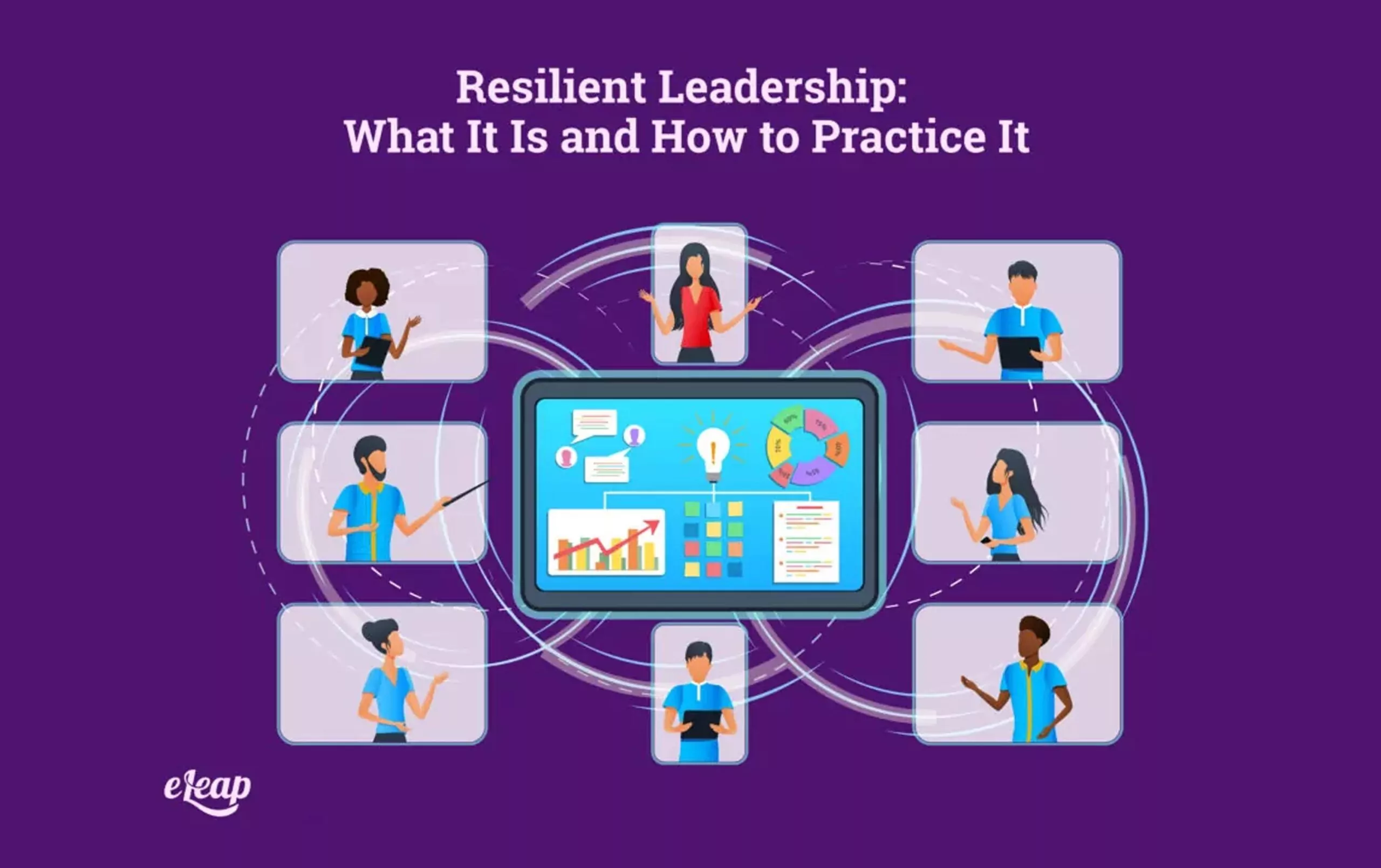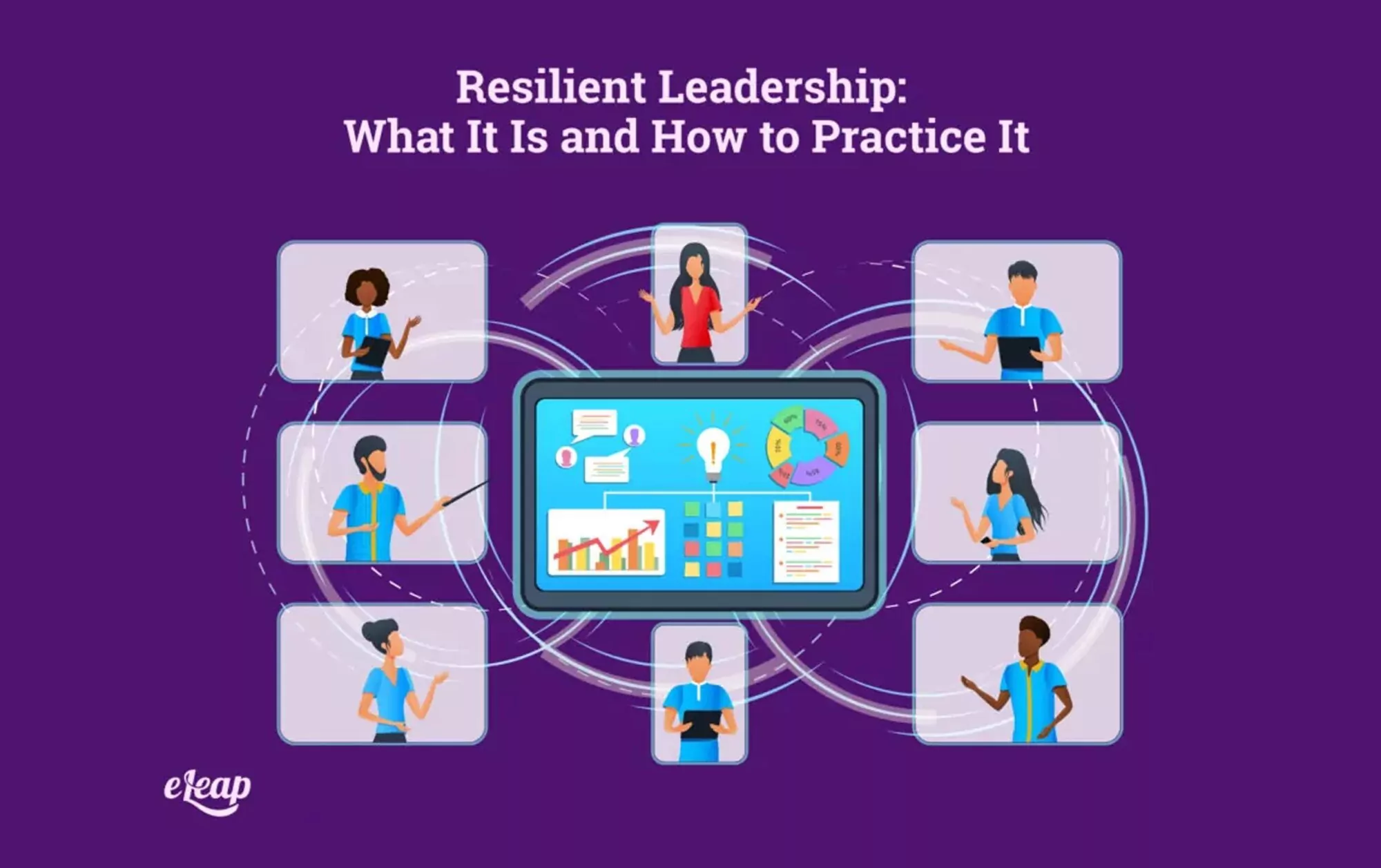Resilient Leadership: What It Is and How to Practice It

There’s a lot of talk today about resilience in the workplace. That’s natural. Employees are being asked to deal with more stressful situations than ever before. Explore how eLeaP®’s Performance Management Platform can simplify evaluations, boost productivity, and drive measurable results.
Many people are forced to work from home. Most of us have been separated from our safety net of family and friends due to social distancing rules and quarantines. The nation is increasingly polarized politically and socially.

However, there is less focus being paid to leaders and their level of resilience. This is a critical mistake. After all, resilient leaders can help employees bounce back and deal better with the strange new normal in which we find ourselves.
What is resilient leadership, though? How does one put it into practice? We will discuss critical considerations below.
What Is Resilience, Anyway?
First, let’s define what resilience is. Essentially, it’s our innate ability to bounce back from negative situations. It’s being able to navigate an uncertain world with confidence and being able to assure employees or team members that everything’s going to be OK.
For a more concrete definition, we can turn to IMD, which states, “Resilience is the human capacity to meet adversity, setbacks, and trauma, and then recover from them to live life fully.”
What Is Resilient Leadership?
Given the definition above, how does one go about integrating resilience into leadership? Really, it’s about extending your natural capabilities to those who follow you. A resilient leader can cope with change and adapt to it while providing their teams with help and encouragement to do the same.
Why Does Resilience Matter in Leadership?
All levels of leadership are inherently stressful. Managing even a small team can be littered with challenges and pitfalls. That is compounded during times of crisis, including the pandemic, the looming economic troubles, increasing political instability, and more.
Leaders must have inner resilience to endure those challenges but also to grow stronger during those periods. When others might wilt under the strain, resilient leaders come to the fore, and many come into their own. Consider Nelson Mandela: as a youth, he believed that violence was the only way to meet the oppression that Black people faced in South Africa. After his arrest and incarceration, he emerged with a radically different view – peace would be possible only through reconciliation. Not only did he hold to those views, but he was able to make them a reality. Ultimately, his resilience transformed not just himself but an entire nation of people.
How to Build Resilience in Leadership
What makes one leader more resilient than another? Is it something inborn or something learned? While the science behind resilience is not 100% understood, it turns out that both intrinsic and extrinsic forces play a role here. The good news is even the intrinsic qualities that affect resilience can be bolstered and grown. Below, you’ll find eight critical tips to help you become more resilient in your life and leadership capabilities:
1. You Need a Network
Look at any resilient leader, and you’ll find one thing they all have in common (other than their resilience). They all have robust networks of family, friends, and professional connections. The more personal relationships you have, the stronger your base of support will be, which can be crucial in dealing with hardships and challenges.
2. Stay Connected
It’s not enough to build a network of personal and professional friendships. You need to intentionally stay connected with them. Set aside time regularly to communicate with them – it can be something as simple as text messages or as in-depth as a video call.
3. Exercise
This tip might sound strange, but the science is proven. Regular physical activity helps us deal with mental and emotional challenges, including stress. It also helps us be more resilient during trying times. You don’t necessarily need to join a gym and start working out at 4 AM, though. Even something as simple as going for a daily jog can be enough to start changing the paradigm.
4. Have a Cut-Off Time
We live in an always-on society. From social media to text messages, phone calls to email, the line between on and off time has become more than a little bit blurred. Take definitive action and set a cut-off time. Turn off your phone. Set the smartwatch aside. Shut out the world and strive to get between seven and eight hours of rest per night. Note that this varies dramatically between people: you should shoot for the amount of sleep that your body needs to rejuvenate. The point here is that you need to carve out uninterrupted, dedicated time for sleep.
5. Get Mindful
No doubt you have heard of mindfulness practice by this point. If not, you’ve been living under a rather large rock. What started as an offshoot of Buddhism has grown incredibly fast and can now be found everywhere, from yoga studios to Fortune 500 boardrooms. There are good reasons for that. Mindfulness offers some pretty dramatic benefits. Develop a regular practice and follow it daily.
6. Learn to Look at Things Differently
There’s a saying, “Change how you look at things, and the things you look at will change.” Understand that almost everything in life is based on our perceptions of situations, events, interactions with others, and more. If you change how you look at things (perception), you will find that you’re able to change how you react to those things.
7. Be Positive
No one can be positive all the time, and anyone who urges that is preaching toxic positivity. However, by consciously striving to be more positive, you’ll naturally become more resilient.
8. Be Grateful
Gratitude has a profound impact on the mind and body. In fact, if there is one single element required for resilience, it’s simply being grateful for the small things in your life.
While the steps above are not a guarantee that you’ll immediately be the most resilient leader, they are a beginning. Regularly practicing them will help improve your resilience and allow you to lead with confidence, even during the most trying of times. Resilience is something everyone can learn. This one-minute video presents 4 steps to help build resilience.